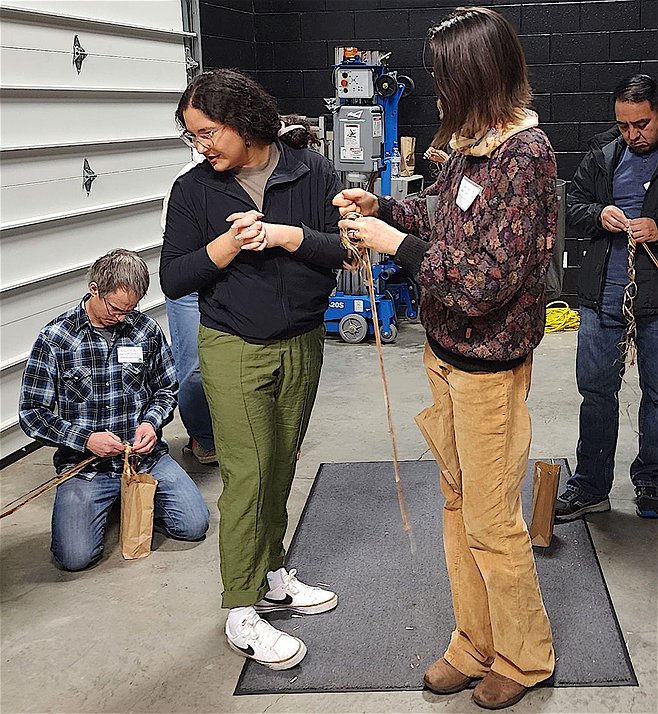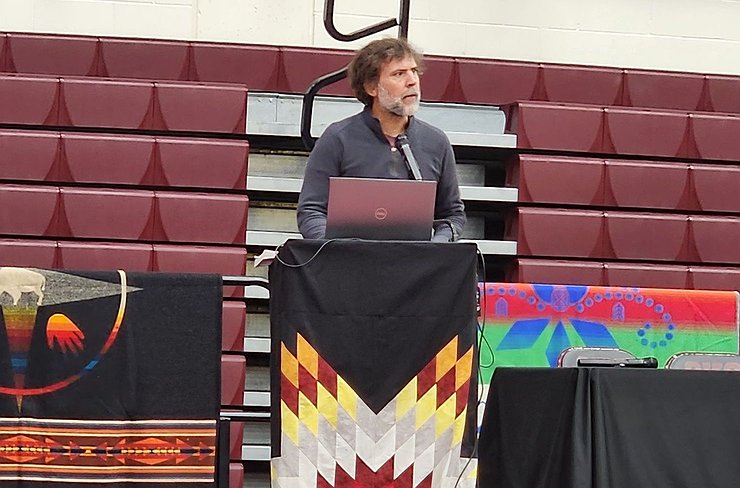Reciprocity was theme of SKC climate symposium
A regional climate symposium held at Salish Kootenai College on Nov. 21 gathered representatives from state, federal, tribal, and non-government organizations to discuss climate efforts and projects.
The SKC Learning Hub packed the two-day symposium, held at the Joe McDonald Health and Education Center, with discussions, presentations of projects, and chances to meet other folks interested in climate information and research.
Keynote speaker was Robin Wall Kimmerer – a mother, scientist, decorated professor, author, and enrolled member of the Citizen Potawatomi Nation.
Tribal member Germaine White introduced Kimmerer as a woman who “gracefully navigates between indigenous and academia.”
“Everyday miracles are viewed as natural resources,” Kimmerer said near the beginning of her talk, and this worldview bothers her.
“What more can we take from the Earth should be changed into a question of what does the Earth ask of us?” she said.
“Our teaching says every being, whether a salamander, a starfish, or a human person, are all given gifts for the privilege of our lives here,” Kimmerer said, stressing the interconnectedness of life.
In another part of her speech, she issued the call to reciprocity, saying, “Take it off the page and into the world.”
Kimmerer is perhaps best known for her 2013 book, Braiding Sweetgrass: Indigenous Wisdom, Scientific Knowledge, and the Teachings of Plants. She also wrote “Gathering Moss,” and a new book, “The Serviceberry – Abundance and Reciprocity in the Natural World,” which explains more of her views on our responsibility to give back to nature, which sustains us.
A lesson in making cordage
During the two-day symposium, the SKC Salish Language Studies group brought some Salish culture to the Johnny Arlee/Victor Charlo Theatre. Group leaders seemed to emulate Kimmerer’s themes of care and thankfulness with the attention they gave to the dogbane stalks as they taught symposium attendees to make cordage from the plants.
“Lay the stalk down on the floor and then walk sideways on it to flatten the stem,” advised Alfred Woodcock.
Rookie cordage makers separated the dogbane fibers into two strands, gently pulling the woody chunks off and placing them into a paper bag to be returned to an area where dogbane grows as the seeds bunch atop the stalks. Then the two strands were rubbed between both hands. Twisting came next, and Woodcock, Jan Gardipe, Linda Ferris, and other group members made it look easy.
The end result was a piece of strong fiber cord “made the way we used to make it,” Woodcock said. Cordage could be used for tying a parfleche, making a snare, or mending a bridle.
The symposium ended on Thursday evening with a meal as Kimmerer and the other participants shared food and stories.





